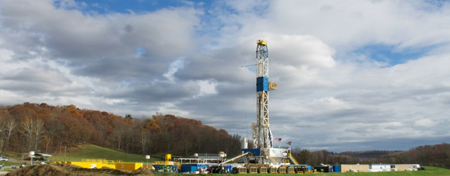ODNR Working to Ensure Water Stays Safe
Friday, January 17, 2014
 NILES, Ohio — Ohio Department of Natural Resources Director James Zehringer said everything that can be done is being done to ensure water supplies are not affected by any process of the Utica shale drilling process.Zehringer spoke Jan. 16 at the Regional Chamber Government Affairs Council in Niles.
NILES, Ohio — Ohio Department of Natural Resources Director James Zehringer said everything that can be done is being done to ensure water supplies are not affected by any process of the Utica shale drilling process.Zehringer spoke Jan. 16 at the Regional Chamber Government Affairs Council in Niles.
Wells and production
The Utica shale is thought to exist from Trumbull County to Washington County in Ohio.
Zehringer said that 225 wells were drilled in 2012 and 661 wells were drilled in 2013. He expects the number to climb to 1,180 wells by the end of 2014. He added that the shale boom has been busy in Ohio but it was not reached its busiest point yet.
Something the added was that one horizontal oil wells is producing the same as 312 conventional wells in Ohio. As far as gas wells, one horizontal well is producing the same amount as 449 conventional wells and sometimes even more.
Staffing
Due to the boom in the shale industry in such a small amount of time, the ODNR has had to increase its staffing levels.He said he was proud that the ODNR has tripled the staff at the ODNR since 2011 in response to the Utica shale drilling.
When Zehringer took the reins at the ODNR in 2011, he immediately hired Rick Simmers, as chief of the division of the oil and gas regulation management.
Always a risk
Simmer said there are risks to drilling but he feels the risks can be mitigated with industry regulations in Ohio
He said that while he has heard about the water quality and supply fears, he feels that with the regulations in place, water can be kept safe in Ohio.
He added Ohio’s law on well construction is very defined. In fact, he said Texas is modifying their well construction regulations to be more like Ohio’s. Additionally, the permit needs to explain how the driller expects to case the well and they need to complete a baseline of water quality sources around the wellhead.
Simmers said he is confident especially with the new very distinct rules and regulations to be laid out by the ODNR, the process will be safer than other states.
He said if someone does suspect a water problem then a hydrologist with ODNR will complete an investigation.
Pennsylvania
He added that unlike in Pennsylvania, the state will do the investigations. In Pennsylvania, the oil and gas companies drilling are responsible for completing the water investigation.
Simmers said that the ODNR has chemists, hydrologists, engineers and enforcement officials working at ODNR ready to investigate and handle any claims related to the shale industry.
Zehring said he is working to ensure water quality is at the top of the ODNR’s list of concerns when it comes to the shale industry.
He said one thing that he feels keeps it safe is the six layers of steel and the six layers of cement that is used to drill the well
He added that as far as he knows, he hasn’t heard of any water wells compromised because of hydraulic fracturing.
“We have inspectors on site and staff to witness it the whole way,” said Zehringer.
Industry view
Zehring said he shares Governor John Kasich’s view of the industry.
He said Kasich hopes the industry thrives in Ohio but not at the expense of Ohio’s citizens or the environment.
Severance tax
Another area, Zehring touched on during his speech was the proposed severance tax for Ohio and how it could impact the ODNR.
He said that the ODNR will generate more funds for the division, some will also be taken away which could be a concern.
He said the funding generated by the severance tax would pay for a plan to plug orphan wells which was very expensive to plug and are in various stages of needing plugged across Ohio.
However, the severance tax if passed as it stands would mean less income because the owners of conventional gas and oil wells would not be paying fees like they are now.




